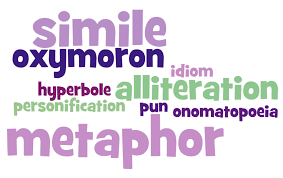The 3 Types Of Subheadings You Should Include In Your APA Literature Review
When writing an APA literature review, it is important to include subheadings that help organize and focus your work. There are three types of subheadings that can be useful in this process: descriptive, analytical, and methodological. Descriptive subheadings present a summary of the article, while analytical subheadings provide detailed analysis. Methodological subheadings help you analyze the study methods used by the authors.
If you are writing a review for a journal article, it is helpful to include descriptive subheadings that summarize key themes and ideas found in the article. For example, if one of the major themes of the article is the impact of technology on students’ academic performance, you might use a descriptive subheading such as “The Impact of Technology on Student Performance” or “Technology and Student Academic Performance.”
If you are reviewing an article for a book or dissertation, it is helpful to include analytical subheadings that provide more detail about specific points made in the article. For example, if one of the main points made in an article is that student engagement plays an important role in school success, you might use an analytical subheading such as “The Role of Student Engagement in School Success” or “Student Engagement and School Success.”
It is also helpful to include methodological subheadings that discuss how the study was conducted and what research methods were used by the authors. For example,
youtube crash course literature to kill a mockingbird
In order to complete an effective literature review, it is important to familiarize yourself with the different types of subheadings that are commonly used in academic papers. This YouTube crash course will teach you about the three types of subheadings and how to use them in your research paper.
The three main types of subheadings used in academic papers are: 1) Introduction; 2) Methodology; and 3) Results. Each type of subheading has its own purpose and should be used in a specific way so that your reader can easily understand what you are discussing.
The introduction is a general overview of your paper that provides information about the topic, the author, and the structure of the paper. This section should not contain any detailed analysis or data, but should instead provide an overall picture of the paper.
The methodology section outlines how you conducted your research and analyzed your data. This section should include details such as the methods you used, the sources you consulted, and the Statistical Analysis You Used.
Finally, the results section presents your findings and offers any conclusions you have reached. This section should include a discussion of your findings as well as any relevant data or images you included.
In order to produce high-quality APA literature reviews, it is important to have a clear understanding of the different types of subheadings that can be used.
Subheadings are used to help organize the literature review and make it easier for the reader to follow. There are four main types of subheadings that can be used:

1. Main headings: These are the overall titles for each section of the literature review. They should be concise and clearly state what the section is about.
2. Level 1 subheadings: These subheadings divide each section into smaller subsections. They should be used to further break down the main ideas discussed in each section.
3. Level 2 subheadings: These subheadings provide more detailed information about specific concepts discussed under level 1 subheadings. They can be used to introduce new topics or provide more detailed explanations of existing topics.
4. Level 3 subheadings: These subheadings offer even more specific information about particular aspects of the topic being discussed. They can be used to clarify points made in level 2 subheadings or provide additional details about a particular concept or example.”
The three types of subheadings that are most commonly used in literature reviews are: introductory, body, and conclusion.
Introductory subheadings are used to introduce the reader to the review. They typically provide an overview of the review, including its purpose and scope.
Body subheadings are used to organize the body of the review. They help the reader follow the flow of the review and understand its main points.
Conclusion subheadings are used to summarize the findings of the review and provide a conclusion.
Each type of subheading has its own advantages and disadvantages, so it is important to choose the one that will best suit your research goals.
If you are looking for a quick and easy way to organize your thoughts, then an outline might be the best option for you. Outlines can help you see the overall structure of your paper and make sure that all of your ideas fit together cohesively. However, outlines can also be very limiting; if you get stuck on one section, it can be difficult to move on to the next.
A mind map can be a great way to brainstorm ideas and see the connections between them. Mind maps are often more flexible than outlines, so you can add or remove ideas as needed. However, they can also be overwhelming if you have too many ideas, and it can be difficult to know where to start.
A table of contents can help you see the overall structure of your paper at a glance, which can be helpful when you are planning or editing your work. However, a table of contents can also make it difficult to see the relationships between different sections of your paper.
imagery in literature site youtube.com
There are many ways to present and organize information in a research paper, but one of the most common is through headings. Headings can help readers quickly understand the different sections of your paper, and they can also help you avoid cluttering up your text with extra words.
When writing your literature review, it’s important to include at least three headings that help you structure your discussion. Here are three types of headings you should include:
1. Thesis Statement
This heading lets readers know what your main focus will be in your review. This is the introduction to your paper, so make sure that it is clear and concise.
2. Analysis of Literature
This heading outlines the different aspects of the literature you will be discussing. This includes examining the text itself, as well as looking at how it has been used throughout history.
3. Conclusion/Recommendations
This heading sums up what you’ve learned from reading the literature and offers some recommendations for further research or study.



